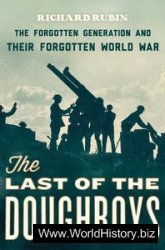Problems of unemployment and industrial stagnation had high priority during the hundred days. Congress appropriated $500 million for relief of the needy, and it created the Civilian Conservation Corps (CCC) to provide jobs for men between the ages of eighteen and twenty-five in reforestation and other conservation projects. To stimulate industry, Congress passed one of its most controversial measures, the National Industrial Recovery Act (NIRA). Besides establishing the Public Works Administration with authority to spend $3.3 billion, this law permitted manufacturers to draw up industry-wide codes of “fair business practices.” Under the law producers could agree to raise prices and limit production without violating the antitrust laws. The law gave workers the protection of minimum wage and maximum hours regulations and guaranteed them the right “to organize and bargain collectively through representatives of their own choosing,” an immense stimulus to the union movement.
The NIRA was a variant on the idea of the corporate state. This concept envisaged a system of industrywide organizations of capitalists and workers (supervised by the government) that would resolve conflicts internally, thereby avoiding wasteful economic competition and dangerous social clashes. It was an outgrowth of the trade association idea, although Hoover, who had supported voluntary associations, denounced it because of its compulsory aspects. It was also similar to experiments being carried out by the fascist dictator Benito Mussolini in Italy and by the Nazis in Adolf Hitler’s Germany. It did not, of course, turn America into a fascist state, but it did herald an increasing concentration of economic power in the hands of interest groups, both industrialists’ organizations and labor unions.
The act created a government agency, the National Recovery Administration (NRA), to supervise the drafting and operation of the business codes. Drafting posed difficult problems, first because each industry insisted on tailoring the agreements to its special needs and second because most manufacturers were unwilling to accept all the provisions of Section 7a of the law, which guaranteed workers the right to unionize and bargain collectively. While thousands of employers agreed to the pledge “We Do Our Part” in order to receive the Blue Eagle symbol of NRA, many were more interested in the monopolistic aspects of the act than in boosting wages and encouraging unionization. In practice, the largest manufacturers in each industry drew up the codes.
The effects of the NIRA were both more and less than the designers of the system had intended. In a sense it tried to accomplish the impossible— to change the very nature of business ethics and control the everyday activities of millions of individual enterprises. At the practical level, it did not end the Depression. There was a brief upturn in the spring of 1933, but the expected revival of industry did not take place; in nearly every case the dominant producers in each industry used their power to raise prices and limit production rather than to hire more workers and increase output.
Beginning with the cotton textile code, however, the agreements succeeded in doing away with the centuries-old problem of child labor in industry. They established the principle of federal regulation of wages and hours and led to the organization of thousands of workers, even in industries where unions had seldom been significant. Within a year John L. Lewis’s United Mine Workers expanded from 150,000 members to half a million. About 100,000 automobile workers joined unions, as did a comparable number of steelworkers.
Labor leaders used the NIRA to persuade workers that Roosevelt wanted them to join unions— which was something of an overstatement. In 1935, because the craft-oriented AFL had displayed little enthusiasm for enrolling unskilled workers on an industry-wide basis, John L. Lewis, together with officials of the garment trade unions, formed the Committee for Industrial Organization (CIO) and set out to rally workers in each of these mass-production industries into one union without regard for craft lines. Since a union containing all the workers in a factory was easier to organize and direct than separate craft unions, this was a far more effective way of unionizing factory labor. The AFL expelled these unions, however, and in 1938 the CIO became the Congress of Industrial Organizations. Soon it rivaled the AFL in size and importance.




 World History
World History









